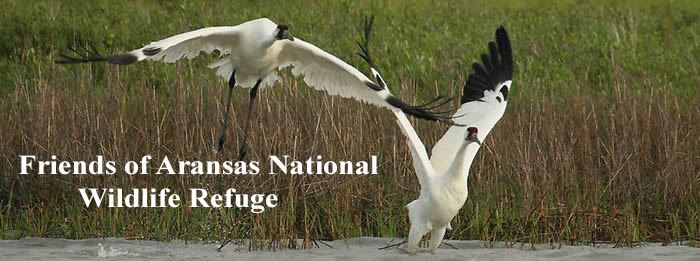Wade Harrell, U.S. Whooping Crane Recovery Coordinator
On the Aransas National Wildlife Refuge:
- Spring migration has begun. If you want to come out and see some whooping cranes at the refuge, come soon. There is a reasonable chance to see a pair of whoopers at the 40 foot observation tower. While there are still a lot of cranes around the refuge, the numbers will soon start dwindling as the birds head back north.
- We were sent pictures of a marked adult whooping crane that has been observed near the Big Tree area of Lamar. We have not been able to track the bird since September due to a broken antenna. Reports are that the whooper generally moves around with another adult whooper and a juvenile sandhill crane. The photo included in this Update is of that bird.
From the Tracking partnership:
- March 11: One marked 2 year old adult and one unmarked adult were spotted at Granger Lake. Data from the tracking partnership indicates the 2 year old (this is the bird that came up from Aransas in late January) started migration on the afternoon of March 12 and is currently near the Missouri River, along the Nebraska/South Dakota border.
- It appears that the other cranes (8) that spent the winter in the Granger Lake area have begun migration as well. The marked family group from Granger Lake that we reported on last time is now in Central Nebraska, north of the Platte River.
- The family group that spent the winter north of El Campo has begun migration and is currently in north-central Nebraska after making a quick stopover in Oklahoma.
- As of March 19, none of the marked birds on and around Aransas Refuge have begun migrating.
From Texas whooper watch, USFWS (Nebraska) and other observers:
- March 6: Five adult whoopers and one juvenile were sighted at Quivira National Wildlife Refuge in Kansas on Big Salt Marsh.
- March 6-8: One adult whooper was sighted on the Platte River in central Nebraska, at Audubon’s Rowe Sanctuary.
- March 7-13: One adult whooper was sighted on the Platte River in central Nebraska, downstream of Wood River.
- March 13: Four adult whoopers and one juvenile were spotted on the Middle Loup River in Nebraska.
- March 14: Two adult whoopers were spotted during an aerial survey in the Rainwater Basin of Nebraska.
- March 14: One adult whooper was spotted at Quivira Refuge in Kansas.
- March 15: A pair of whooping cranes were seen in the Mad Island Marsh area, Matagorda County.
Precipitation/Salinity:
The refuge has not had any significant rainfall since February 7, when 1.66 inches were recorded. This is the longest dry period we have had this winter and without significant rainfall in the future, the habitat conditions that whooping cranes encounter in Texas next winter will likely be poor. Persistent drought has reduced freshwater availability and maintained high salinity levels within whooping crane habitat on and around the Aransas National Wildlife Refuge this winter. Over the past couple weeks, the salinity levels in San Antonio Bay have ranged between 25 and 30 ppt, well above optimal levels. Unfortunately, much of the southern Great Plains, from north Texas through Nebraska, have also experienced significant drought. Stopover habitat for whooping cranes migrating back to Canada is likely sub-optimal this spring given the current conditions.
